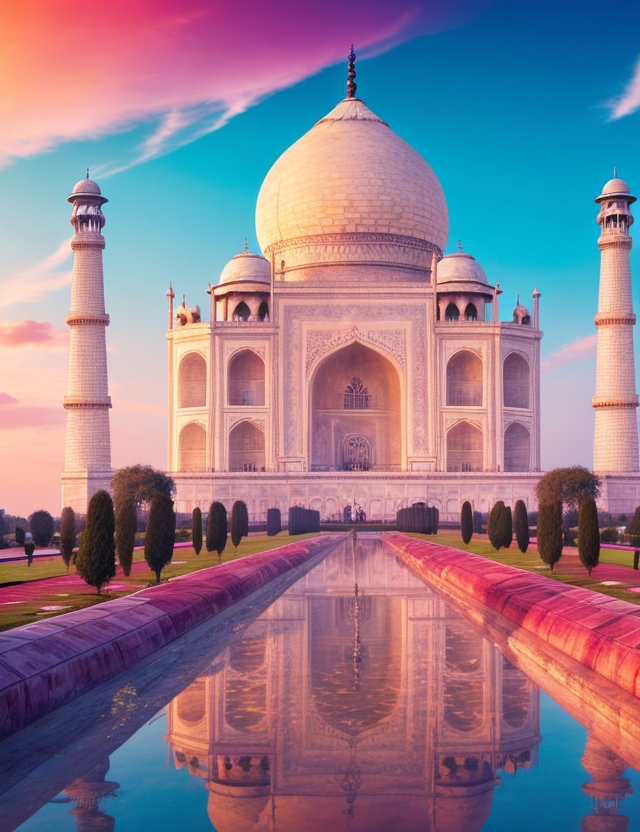Shah Jahan was the fifth Mughal emperor of India, who ruled from 1628 to 1658. He was a great patron of art and architecture, and he built many beautiful buildings and gardens in his empire. But his most famous and beloved creation was the Taj Mahal, a white marble mausoleum that he built in memory of his wife Mumtaz Mahal.

Mumtaz Mahal was Shah Jahan’s second wife, whom he married in 1612. She was his constant companion and confidante, and he called her “the chosen one of the palace”. She bore him 14 children, but died in 1631 while giving birth to their last child, Gauhara Begum. Shah Jahan was heartbroken by her death, and decided to build a magnificent tomb for her as a symbol of his eternal love.
He commissioned the best architects, craftsmen, and artists from India, Persia, the Ottoman Empire, and Europe to design and construct the Taj Mahal. The project started in 1632 and took about 22 years to complete. The mausoleum is located on the right bank of the Yamuna river in Agra, Uttar Pradesh. It is surrounded by a complex of buildings and gardens, which include a mosque, a guest house, a main gateway, and a crenellated wall.
The Taj Mahal is considered to be the finest example of Mughal architecture, which is a blend of Indian, Persian, and Islamic styles. The mausoleum is made of white marble that reflects different colours depending on the time of the day and the season. It is decorated with intricate carvings, calligraphy, floral patterns, precious stones, and geometric designs. The dome of the mausoleum is 73 meters high, and is flanked by four minarets that are 40 meters high each. The interior of the mausoleum contains the cenotaphs of Mumtaz Mahal and Shah Jahan, which are enclosed by an octagonal marble screen. The actual graves are located in a lower chamber.
The Taj Mahal is not only a masterpiece of art and engineering, but also a testament of love and devotion. It is one of the most iconic monuments in the world, and attracts millions of visitors every year. It was declared a UNESCO World Heritage Site in 1983, and was voted as one of the New Seven Wonders of the World in 2007. The Taj Mahal is also known as “the jewel of Muslim art in India” and “the illumined or illustrious tomb